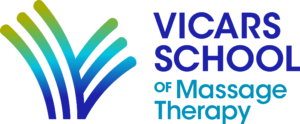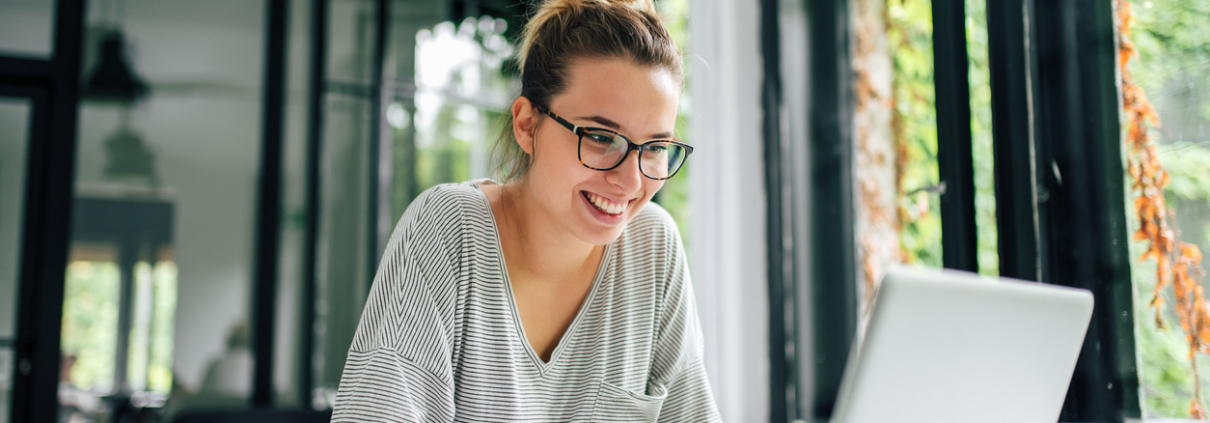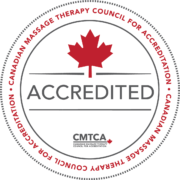Massage Therapy Curriculum Spotlight: Diversity and Inclusion Assignment
Massage is a hands-on profession, and at MH Vicars School of Massage Therapy, our emphasis is on developing hands-on skills.
But there’s a lot more to being a successful and effective registered massage therapist than knowing how to perform all the massage strokes and sequences.
Welcome to a new blog series—the Massage Therapy Curriculum Spotlight! In this semi-regular series, we will highlight a subject, assignment, or course that we teach here at MH Vicars School of Massage Therapy.
Our curriculum includes a wide range of subjects and courses. As a result, Vicars graduates have all the skills and knowledge that they need to begin a successful career as an effective therapist. Courses include assessment, kinesiology, anatomy and physiology, hydrotherapy, pathology, ethics and the therapeutic relationship, and massage business best practices. Students learn these subjects in person as well as through online lectures and assignments. Click here to see our full course list and to learn why it’s important to attend a school that follows the national curriculum standard.
We’re kicking off the blog series with an in-depth look at the interactive online Diversity and Inclusion assignment our students complete in second year. This assignment is a perennial favourite among instructors and—once they’ve completed it—among students as well.
For the Diversity and Inclusion project, each student must research and write a short paper and then post it to their class’s forum on the Vicars online learning platform, Moodle. In their papers, they need to explain what the concepts of “diversity” and “inclusion” mean to them, their relevance to the massage therapy profession, and how they plan to promote them in their future business and practice.
“I love reading what the students have to say in this assignment,” says Linda McGeachy, Director of Curriculum at Vicars. “It always fills me with so much faith in our students, and in what kind of therapists they’re going to be. If these are the values that they have, then obviously they’re going to do a good job, on all levels.”
The second part of the assignment is to read their classmates’ submissions, ask questions, and provide feedback. For Linda, that’s one of the most valuable parts of this assignment.
“The comments and support that the students offer to each other are so heartfelt, and so thoughtful,” she says.
To help illustrate the level of care and creativity that our students pour into this assignment, we’ve assembled a selection of excerpts from of this year’s submissions. When you read them, we have no doubt you’ll be just as impressed by our students as we are—and if you are thinking of a career in massage therapy, you’ll have a deeper understanding of what it takes to be a Vicars student.
Here’s how Sarah Hornett described the difference between “diversity” and “inclusion” in her own words:
Diversity is the seen and unseen differences among individuals in an environment that encompass not only the obvious physical attributes that characterize a person, but also the intellectual, spiritual, personal, and ethical factors that make each of us unique. Inclusion therefore relates to creating and maintaining processes that allow various individuals to coexist in that same environment while establishing a culture of safety, togetherness, and belonging.
Maria Semeniuk, on how these concepts are central to why she chose to go to massage school:
I believe diversity and inclusion are of great importance to my practice. Every person is entitled to the best quality of care, regardless of their unique circumstances, ethnicity, gender, or age. This is my main motivation to study massage therapy. I have a passion for helping and volunteering as much as possible at hospitals and hospices. Massage therapy brings value to what I offer as a volunteer: being able to recognize, respect, and accept diversity and being able to practice with inclusion are vital skills for this role.
Elisha Fox explained how, thanks to this assignment, she’s already taking action to make sure that she can create an inclusive practice:
It is very important to me to help as many individuals as possible. I recognize that I live in a diverse community, so how can I incorporate inclusion into my practice?
I believe self-awareness can be the first step towards understanding, compassion and acceptance. So I took a few of the “Harvard Implicit Association Tests.” I found them on the Canadian Center for Diversity and Inclusion website. I thought the tests were interesting and may give possible insight on recognizing one’s own internal biases. Which we may or may not be aware of ourselves, right?
I’m also committed to continuing my education by taking classes, reading forums, and associating with people who are part of different groups to familiarize myself with proper titles and different perspectives.
In addition to sending out a rallying cry to her classmates, Amy Sawka pointed out that it’s as important to seek out diversity within one’s own environment as it is to try to attract a diverse clientele:
If I were to work exclusively with other therapists or modality practitioners who have similar socio-economic backgrounds to me, or who identify similarly, I would be less able to learn and expand my own horizons and the more I am likely to be blinded by bias. I intend to maintain an inclusive and diverse practice in which I stay curious, listen to other’s requests, and provide concessions and modifications to those who require it.
It is integral that we, as Vicars therapists, innovate and set the standard for diversity and inclusion in our massage practices as we pave the way for the next generation who will follow in our footsteps. The more of the map we are able to see, the more places we are able to go! Together!
Melissa Jensen was one of many students who gave concrete examples of how they can ensure that their business is welcoming and supportive of everyone:
With the existing power differential already existing in massage therapy and other somatic healing practices, inclusive practices will help build confidence and trust from the initial contact on. Some ways to help clients to feel included could include:
- Connecting with clients about how they would like to be contacted or reminded of appointments could alleviate stress from hearing, visual, or possible language barriers.
- Having an easily accessible facility with clear directions on how to enter the building will help those who may have physical impairments.
- Sending informed consent forms and asking for health histories prior to meeting with clients so that they can have time to provide information without feeling rushed or embarrassed.
- Including questions about preferred names and pronouns.
- Having a gender-neutral washroom with a change table and feminine hygiene products available.
- Using language that puts clients at ease in making the choice that they feel most comfortable with (e.g., rather than say “Undress to your level of comfort” I could say “Some clients choose to leave garments on”).
Working on this assignment wasn’t the first time that Hayley Emro had thought about the importance of diversity and inclusion in her own life:
Why are diversity and inclusion important for my business, and my personal life? To be blunt and honest, because I want to be anti-racist and non-discriminatory.
Over the past five years I have become increasingly aware of whose voices I am listening to and reading; this includes seeking out books, social media, movies, and educational material from people with different identities. This is important to me because I want to connect to a diverse range of human experiences that accurately reflect the world.
Diversity happens when there is difference within a setting that benefits from a range of human experiences. People are not diverse, their experiences are. Inclusion places values on these experiences and builds to meet the needs of these experiences.
Inclusion doesn’t happen without designing for it. Learning from and listening to the people we design our workspace for allows us to create appropriate policies, processes, physical spaces, and products for people to feel valued and included.
Melissa Strom is a Pilates teacher, and made this issue real for everyone sharing a lesson she’d learned when she had tried—and initially failed—to create a more inclusive environment in her classes:
Every Thursday, six individuals come to the studio for their weekly Pilates equipment class. They have two things in common: they all love cross-country skiing, and they are all legally blind.
The group came to be at the studio due to the limitations set upon one of the members at another Pilates studio. Due to his visual impairment, he was restricted to beginner mat classes. However, he wanted the ability to take group equipment classes and progress.
Due to our max class size of eight at the studio, I felt I would be up to the challenge and be able to keep him safe through class. I wanted diversity in my studio and for clients to feel included.
I was naive. In a group class setting, I quickly realized I had to be selective about what exercises we did, and I stayed close to the client that had the visual impairment. Essentially, I was offering a private in a group class setting.
It came to the point I had to have a conversation with the client. He was angry: he emphasized how much he modified what he did during class to make sure he kept up, and I emphasized how much I modified the class to make sure he was still included.
I realized that to have the client within the existing classes, I was aiming for equality. I was giving him the same resources and opportunities as everyone else. Unfortunately, this is not equity. Equity recognizes that each person has different circumstances and needs different allocations of the resources and opportunities to reach the same/equal outcome. To truly have inclusion, you need equity. So, we decided to recruit more visually impaired individuals to create their own group class. In this new class, the clients felt comfortable and were able to communicate with me, and I was able to design a class specific to their needs.
Just because I added a visually impaired person to my group classes to show that the studio was inclusive, didn’t mean I was producing benefits for that client (or others at the studio).
But when we worked together and communicated, it did create benefits. The client got a class specifically for people with similar needs. And teaching a class who can’t follow visual cues helped me develop more concise instructions and made me a better instructor.
I have used this learning opportunity in other scenarios, such as with a group of Hutterite women and a group of very devout Islamic women. In these instances, I structured the set-up of the classes (and the resources of the studio) to be conducive to them and their needs. It needs to be recognized that diversity encompasses race, culture, education, socio-economic status, physical and mental ability, etc. Sometimes that meant I was paid in cucumbers, sometimes that meant locking the studio doors to give the clients a sense of privacy.
The Massage Therapy Program at Vicars could be the pathway to your ideal career. We have campuses in Calgary and Edmonton and a schedule that is designed to work with your lifestyle. For more information and to speak with our friendly admissions team, call us toll-free 1-866-491-0574 or sign up for an online open house!




